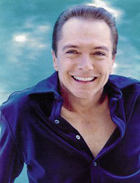
David Cassidy on the Web
IDOL PLAYTHINGS: HOW TEEN STARS SHAPED THE POP WORLD
June 6, 2016
www.udiscovermusic.dk

In Newport, Rhode Island, in 1965, brothers Bob, Bill and Barry Cowsill decided to form a group. The three boys were soon joined by brothers John and Paul, their sister Susan and their mother, Barbara, the siblings ranging in age from 8 to 19 at the time of their debut hit for MGM, ‘The Rain, The Park And Other Things’, which made No.2 on the Billboard Hot 100 in 1967. Though The Cowsills continued to record for a number of years, they had few major hits. But their place in pop history is guaranteed thanks to their inspiring the hugely popular TV show The Partridge Family, which ran from 1970-74 and made a star of David Cassidy.
Though booked not for his singing but thanks to his good looks, Cassidy played the part of lead singer Keith Partridge in the show, which followed the fortunes of a group of musical siblings, joined by their widowed mother as they (successfully) pursued their collective dream of stardom. And while the series may have appealed to the whole family, Cassidy’s particular androgynous good looks and cute charm seemed custom-made to appeal to teenage girls. His face was emblazoned on everything from magazine covers and posters to lunchboxes and board games. However, due to his contract with the TV station, Cassidy himself saw none of the thousands of dollars his face was earning. He became frustrated by what he saw as exploitation, telling the NME in 1972: “I asked my housekeeper to go and buy a certain kind of cereal and when she came home, there was a huge picture of me on the back. I can’t even eat breakfast without seeing my face.”

Cassidy began to rebel against his image, appearing naked (from the hips up) on the cover of Rolling Stone magazine in 1972. But this did nothing to dampen his fans’ ardour, and Cassidy continued to smash box-office records for his sell-out stadium tours, until tragedy struck in 1974. At a show at London’s White City Stadium, pandemonium broke out, resulting in a stampede that saw hundreds injured, with one teenage girl dying from her injuries.
What The Partridge Family had shown was the appeal to this key audience of a family act. Two more of the biggest acts of the decade would exploit this – this time non-fictional families, namely the Jacksons and the Osmonds.
